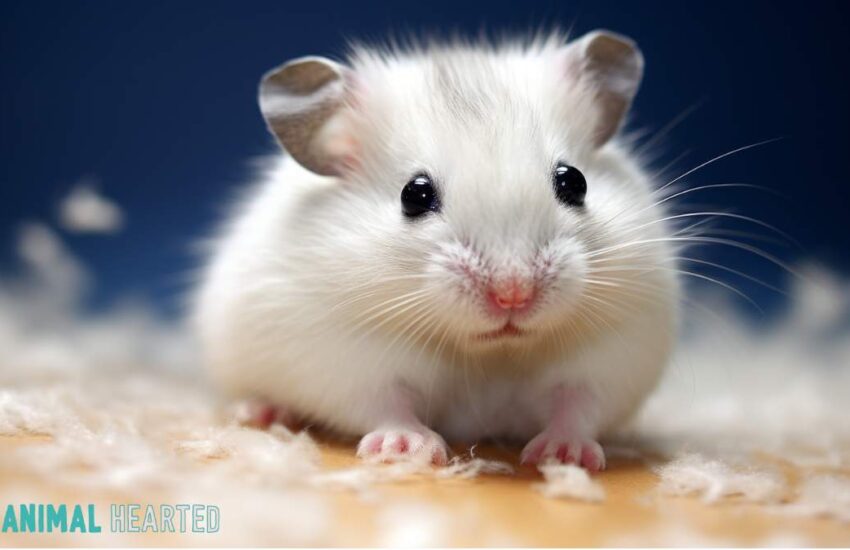Best Hamsters for Quick Adaptation
Hamsters are small, furry animals that make excellent pets for many people. They are cute, entertaining, and relatively easy to care for. However, not all hamsters are created equal when it comes to adapting to new environments and handling. This article explores the best hamster breeds known for their quick adaptation and friendly nature. Whether you are a first-time pet owner or looking to add to your furry family, understanding which hamsters can adjust quickly can make all the difference in creating a harmonious home.
According to recent studies, the adaptability of a hamster can significantly impact its overall well-being and the owner’s experience. Adapting to a new environment is crucial, especially during the initial stages of bringing a new pet home. Within this article, readers will learn about various hamster breeds, their unique characteristics, and tips on ensuring a seamless transition for your new pet.
We will dive deep into the following sections:
- An overview of popular hamster breeds
- Specific traits that contribute to a hamster’s adaptability
- Tips for introducing your hamster to a new home
- Common mistakes to avoid when handling hamsters
- Conclusion with final thoughts on choosing the right hamster
Overview of Popular Hamster Breeds
Choosing the right breed is essential for ensuring that your hamster can adapt quickly to its new environment. Here are some of the most popular hamster breeds known for their adaptability:
Syria Hamster (Golden Hamster)
The Syrian hamster, also known as the golden hamster, is one of the most popular breeds. They are known for their friendly and sociable nature. Syrians tend to be easy to handle, making them an excellent choice for those new to hamsters. Their adaptability is partly due to their calm temperament.
Dwarf Campbell’s Hamster
Dwarf Campbell’s hamsters are smaller but incredibly social. They are known for their playful nature and can live happily in pairs or small groups. These hamsters adjust quickly to new environments and are often more engaged with their owners, making them a fun choice for families.
Roborovski Hamster
Roborovski hamsters are among the smallest breeds but are renowned for their energetic and spirited personalities. They can be more skittish than other breeds, so it’s essential that they get used to handling early on. Roborovskis adapt well to their habitats and can thrive in varied environments.
Chinese Hamster
Chinese hamsters are unique in their appearance and posture. They can be more challenging to find but are generally friendly and adaptable. They are solitary creatures and require their own space, but with careful handling, they can become affectionate companions.
Specific Traits That Contribute to a Hamster’s Adaptability
Not all hamsters are naturally inclined to adapt quickly. Here are some specific traits to consider when choosing a hamster:
Temperament
Some hamsters are naturally more friendly and calm than others. Syrian hamsters, for instance, tend to exhibit a gentle temperament, making them more suitable for handling. In contrast, more energetic breeds like the Roborovski may require more patience during the adjustment period.
Socialization
Hamsters that are well-socialized from an early age are more likely to adapt quickly. Exposure to various stimuli—such as sounds, sights, and handling—can help your pet feel more comfortable in its new environment.
Environment Familiarization
Hamsters that are introduced to their new surroundings in a gradual manner tend to adapt better. It’s crucial to provide a secure and engaging habitat that caters to their natural behaviors. Quality bedding, tunnels, and hiding spots can create a welcoming space.
Tips for Introducing Your Hamster to a New Home
To ensure a smooth transition for your hamster, consider these essential tips:
Set Up a Safe Space
Before bringing the hamster home, create a safe space that includes a cage with plenty of bedding, toys, and hiding spots. This familiar environment can help ease the stress of moving.
Limit Handling in the First Few Days
When you first bring your hamster home, allow it some time to acclimate to its new surroundings. Limit handling for the first few days, allowing the hamster to explore its environment independently.
Gradual Interaction
Once your hamster appears comfortable, gradually start to handle it. Use gentle movements, and let your hamster come to you instead of forcing interactions. This approach builds trust and confidence.
Common Mistakes to Avoid When Handling Hamsters
Even with the best intentions, mistakes can happen when caring for a new pet. Here are some common pitfalls to avoid:
Overstimulating Your Hamster
New pets can easily become overwhelmed. Avoid too much noise, sudden movements, or introducing too many people at once to your new hamster’s environment.
Ignoring Signs of Stress
Be attentive to signs that your hamster may be stressed or scared, such as hiding, excessive chewing, or aggressive behavior. Recognizing these signals is essential for understanding your pet’s needs.
Inconsistent Feeding Routines
Establishing a feeding routine early on helps your hamster feel secure. Consistency with diet and feeding times contributes to the animal’s adaptability and overall satisfaction.
Conclusion: Choosing the Right Hamster
In conclusion, while various hamster breeds can make wonderful pets, some are particularly suited to quick adaptation. Syrian hamsters, Dwarf Campbell’s, Roborovski, and Chinese hamsters each offer unique traits that suit different lifestyles and family dynamics. Understanding the personality, socialization needs, and environment preferences of each breed is critical when choosing the right pet.
By following the tips outlined in this article, you can increase the likelihood of a successful transition for your new hamster, allowing both you and your pet to enjoy a happy and fulfilling relationship. For more detailed insights on hamster care, check out this article and this informative piece. Your new hamster will thank you!

